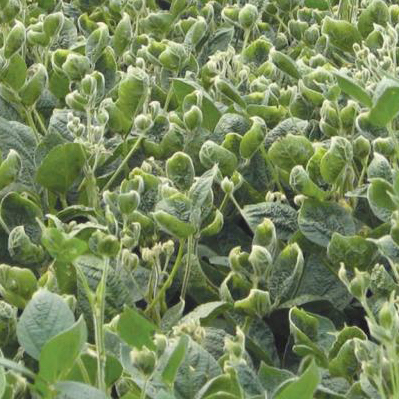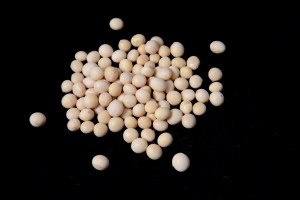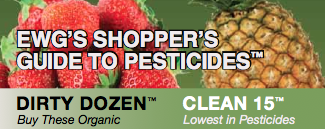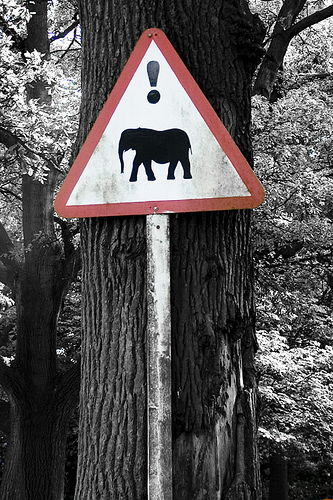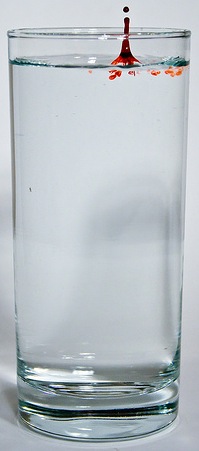In Dicamba drift – Part 1, I described what the dicamba herbicide is, showed how it works, and provided resources about human health effects of dicamba. I also described how dicamba drift happened in 2016, 2017, and 2018. If you haven’t read Part 1 yet, go there first, then come back to Part 2. In this post, I have the timeline of how dicamba drift became a problem, and what may happen in 2019. In Part 3, I’ll discuss some of the specific issues associated with applying dicamba and what might be causing the drift. Part 4 wraps up the series by considering the response of the dicamba manufacturers and potential social impacts this whole debacle might have moving forward.
Dicamba drift picks up
It seems like dicamba drift was a sudden problem. In actuality, dicamba has always been a particular risk for drift. Dan Charles, agriculture correspondent at NPR, summed up dicamba’s problem potential this way: “Dicamba… is notorious for a couple of things: It vaporizes quickly and blows with the wind. And it’s especially toxic to soybeans, even at ridiculously low concentrations.” Dicamba’s volatility was described in 1979, and various formulations over the years have attempted to reduce the likelihood of the herbicide to evaporate at certain temperatures. Dicamba’s impacts on soybeans have also been known for decades, with extension agents recommending dicamba not be used near soybeans as early as 1971.
Many plant species show visible damage from small amounts of dicamba, particularly at early growth stages. Dicamba injury is particularly easy to see in soybean; it causes characteristic cupping of leaves, as shown in the image below. Despite its drawbacks, farmers used dicamba for many years without too much trouble. They didn’t use it very widely, mostly to treat weeds in corn. Farmers knew to avoid using dicamba near broadleaf crops during the growing season because of their high susceptibility to damage.
Something changed in January 2015: the USDA approved dicamba tolerant soybean and cotton. Monsanto had their elite genetics tied up with the dicamba tolerance trait, so they began selling seed right away. That meant farmers were already planting about 20 million acres of dicamba tolerant soybeans in the spring of 2016. Because the Coordinated Framework for the Regulation of Biotechnology keeps regulatory authorities separate, the USDA was able to approve the GE crops without considering what might happen with the associated herbicides.
EPA didn’t approve a lower volatility formulation of dicamba for use on these dicamba tolerant crops until November 2016. Specifically, the approved formulations are XtendiMax by Monsanto, FeXapan by DuPont, and Engenia by BASF. In the meantime, farmers who planted dicamba tolerant soybeans had some difficult choices. Many had glyphosate resistant weeds that could decrease yields. Not treating weeds before they produce seed could result in worse weed problems the following year. Farmers could use older dicamba formulations that were not labeled for use with the GE crops. That would solve their weed problems and protect the yields of their soybeans – but it would also be in violation of the law.
Some farmers did choose to break the law and applied dicamba off-label to their GE dicamba tolerant soybeans. Reports from extension agents in the early summer of 2016 showed that dicamba drift was a major problem, and that illegal application was the culprit. Farmers could be fined by states for illegal use, but the fines were too small to be a deterrent. Farmers can face prison time for such violations; one farmer may serve 20 years for illegal application of dicamba and lying about it to investigators.

The drift continues
In January 2017, four farm and environmental groups filed a lawsuit against the EPA. They argued that the dicamba registrations are illegal because EPA didn’t follow parts of the Endangered Species Act and the Federal Insecticide, Fungicide and Rodenticide Act. That case is still pending (in November 2018, Monsanto filed a motion to dismiss the case). If the judges rule the registrations are in fact illegal, then we might go back to dicamba tolerant seeds with no dicamba formulations that can be used with them.
With the new dicamba formulations available, you might think that lawsuit was a bit premature. The drift should decrease, and things should quiet down for dicamba, right? Unfortunately, that’s not what happened. In 2017, US farmers continued to plant GE dicamba tolerant soybeans in large numbers: 40 million acres, about half of the US soybean crop. Even though the correct formulation of dicamba was available, drift continued.
Kevin Bradley at the University of Missouri tallied all the reports for 2017. He found “2,708 dicamba-related injury cases currently under investigation by various state departments of agriculture around the US, and that there were approximately 3.6 million acres of soybean that were injured by off-site movement of dicamba at some point during 2017.” This may represent only a small fraction of the actual dicamba drift damage.
In October 2017, EPA implemented some changes to the pesticide labels in an effort to reduce the drift problems for 2018. A July 2018 estimate by Kevin Bradley found around 600 cases of injured soybeans making up about 1.1 million acres. This may be a decrease from 2017, but data stopped coming in after July. We don’t know the true extent of the 2018 damage.
What’s next for dicamba
With all the problems of 2016, 2017, and 2018 – what’s next for dicamba, and more importantly, what’s next for farmers and their neighbors? On Halloween 2018, the EPA announced changes to the dicamba pesticide registration, giving farmers a few short months to plan. States are scrambling to implement training for pesticide applicators on the updated pesticide labels. The EPA summarizes the changes:
EPA reached an agreement with manufacturers on measures to further minimize the potential for damage to neighboring crops from the use of over-the-top dicamba formulations used to control weeds in dicamba-tolerant cotton and soybeans. The [manufacturers] agreed to registration and labeling changes including making these products restricted-use, record keeping requirements, and certain additional spray drift mitigation measures for the 2018 growing season.
The EPA emphasizes that farmers may use only the new dicamba formulations on dicamba tolerant crops. Using other dicamba products for that purpose is a violation of the label, and the label is the law. As Dan Charles reports, “the [EPA’s] decision is likely to boost sales of dicamba-tolerant seeds next year. Some farmers, in fact, say that they’ll be forced to plant them. Otherwise, their crops could be damaged by dicamba fumes drifting in from neighboring fields.”
Planting dicamba tolerant seed might help some soybean and cotton farmers, but changes to the dicamba registration may not reduce damage to other crops, or to native vegetation. It also doesn’t help farmers who hoped to grow organic or non-GMO soybeans or cotton, or any crop besides dicamba tolerant soybean and cotton, or naturally tolerant grasses like corn.
Bob Hartzler at Iowa State University lists EPA’s changes in a post titled Moving Forward with Dicamba. Also see his initial thoughts on the new approach to dicamba management.
- People under the supervision of a certified applicator are no longer allowed to make applications.
- Applications are allowed only from 1 hour after sunrise to 2 hours before sunset (previously the restriction was between sunrise and sunset).
- Applications are restricted to 45 days after planting or prior to R1 stage of soybean, whichever comes first (previously the restriction was up to and including the R1 stage).
- Applications cannot be made if rain within 24 hours may result in soil runoff (previously the label stated not to apply if rain is expected to occur within 24 hours).
- The label clarifies what constitutes sensitive areas and where downwind buffers are required. The applicator must survey the area for sensitive crops and residential areas, and then not apply the product when wind is blowing towards these areas. It is up to the applicator to determine the appropriate distance between the target site and sensitive area. One of the more important changes is that the label states that managed or mowed areas adjacent to fields are now considered a non-sensitive area. Thus, the road right-of-way can be considered part of the 110 ft downwind buffer.
- There is a new restriction regarding buffers around the entire field in counties with endangered species.
- Dicamba specific training will again be required for all applicators using the registered products on dicamba-resistant soybean.
